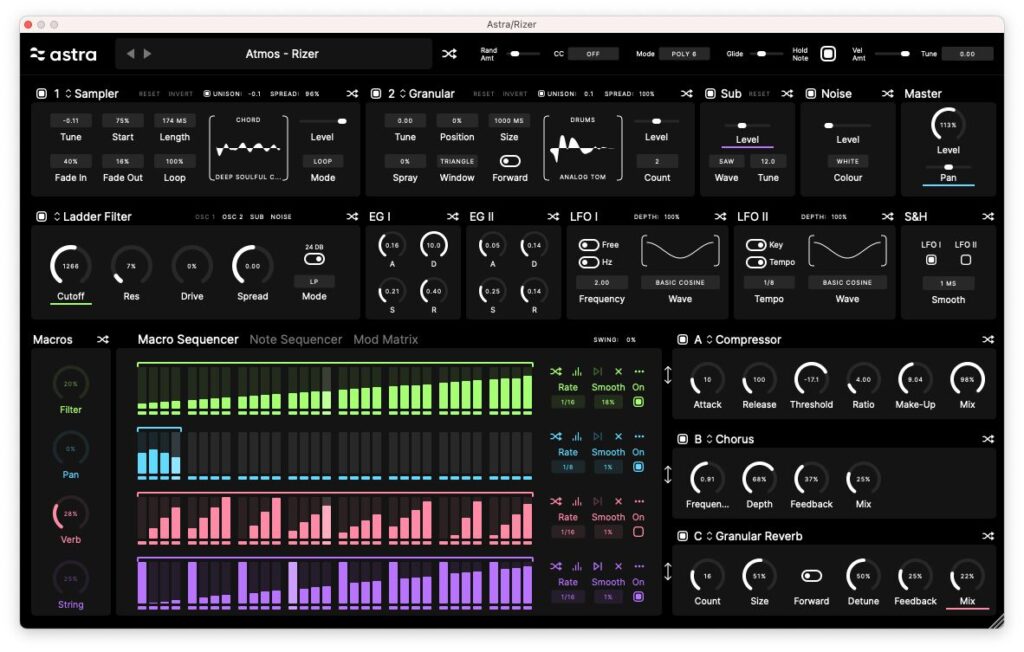
Welcome to the intricate world of Serum, the wavetable synthesizer that’s become a staple in electronic music production. Its broad palette of sounds has captivated producers, allowing them to sculpt audio with precision. But beyond the basics, lies a potent technique every seasoned producer should master: the art of detuning oscillators. It’s not merely about creating a sound; it’s about breathing life into your tracks, making them stand out in a sea of digital noise.
Understanding Oscillators in Serum
At the heart of Serum lies its oscillators, the lifeblood of your sound design journey. An oscillator generates waves – the fundamental building blocks of any sound in the digital realm. Serum provides you with a rich library of wavetable options, each brimming with potential. As you select a wavetable, imagine it as your canvas, ready to be transformed into an auditory masterpiece.
Now, consider the impact of detuning these oscillators. It’s akin to adding brushstrokes to your canvas, each slight turn of the detune knob introducing a new shade of sonic color. When you manipulate the pitch of one oscillator against another, you’re engaging in a dance of frequencies, creating a complex interplay that results in a richer, fuller sound.
The Theory Behind Detuning
Detuning is the deliberate alteration of pitch between two or more oscillators, creating a tension that resonates with the human ear. The magic happens in the space between these pitches, where beat frequencies emerge. These beats are the throbbing, pulsating sound you hear when two tones with similar frequencies are played together – they are the heartbeat of your track.
This concept isn’t just about the numbers; it’s about the feel. When you detune oscillators in Serum, you’re crafting a sonic landscape that’s alive, one that breathes with the ebb and flow of its harmonic content. Whether you aim for the lush pads that provide a backdrop to dreams or the growling basses that power through a mix, mastering detuning is key to unlocking these sounds.
Stay tuned, as we dive deeper into the practical side of detuning, guiding you through the precise settings that will transform your sound design with Serum.
Detuning Techniques in Serum
Serum stands out with its intuitive interface, making detuning oscillators an explorative process. You’ll find the detune control within the oscillator section – a gateway to modifying your sound’s character. Start by selecting two oscillators, perhaps with contrasting wavetables, to begin your foray into the depth of sound.
Fine-tuning involves delicate adjustments, adding subtle width and body to your sound. It’s the difference between a flat image and one with dimensions that speak to the listener. Coarse tuning, on the other hand, is more robust, resulting in more significant pitch variations that can morph your sound into something entirely new.
And let’s not forget about Serum’s unison feature. This powerful tool stacks multiple copies of your oscillator, each one slightly detuned from the last. It’s like a choir, with each voice slightly out of sync, creating a massive, enveloping sound. Imagine turning this feature up, and with each additional voice, your sound grows exponentially, from a single whisper to a mighty roar.
Practical Applications of Detuned Oscillators
Now, let’s put theory into action. Want to create a supersaw lead that cuts through any mix? Start with Serum’s sawtooth wavetable, increase the unison voices, and apply slight detuning to achieve that classic, wide supersaw sound. It’s a sound that’s been at the forefront of countless trance anthems, a testament to its timeless appeal.
For those lush, cinematic pads that seem to sing with emotion, detuning is your secret ingredient. Blend multiple oscillators, play with fine detuning, and immerse them in reverb. The result is a sound that can carry your listeners on a journey, a pad that doesn’t just fill space but enhances the entire soundscape.
And when it comes to bass, the power of detuning cannot be overstated. A thick bass line requires weight, and by detuning, you introduce a grit that simple, single-oscillator basses lack. It’s about giving your bass the room to assert itself, to become the foundation upon which your track is built.
As you tweak, twist, and turn the knobs in Serum, you’re not just creating sounds. You’re invoking emotions, crafting experiences, and as an advanced producer, you know that’s the essence of music. In the following sections, we’ll delve into the nuanced tricks that can elevate your detuned sounds from good to extraordinary. Stay tuned.
Advanced Tips and Tricks
Navigating the labyrinth of Serum‘s parameters offers a plethora of sonic opportunities. One pro-tip is to engage with modulation when dealing with detuned oscillators. Modulation can animate your detuning, lending a dynamic quality to the sound that static detuning cannot achieve. Assign an LFO to the fine-tune control and set it to a slow rate. You’ll create a living, breathing entity that evolves over time.
Automation is another frontier. By recording real-time adjustments to the detune amount, you can imprint your human touch onto the sound. This isn’t just about random movement; it’s about intentional, expressive modulation that tells a story.
Let’s also talk about Serum’s warp modes. These are the alchemists of Serum’s world, transmuting your detuned sounds into new elements. Utilize the Bend+, Bend-, or Asym warp modes to morph your detuned sounds into shapes that defy conventional synthesis.
Avoiding pitfalls is crucial. Excessive detuning can lead to a loss of focus in your sound, so balance is key. It’s tempting to max out every parameter, but restraint can often be the pathway to a more powerful sound. Think of it like spices in a dish; the right amount enhances the flavor, but too much can overwhelm the palate.
Creative Experimentation with Detuning
There’s a realm of possibility within Serum that’s only limited by your creativity. Venturing beyond the conventional paths can lead to groundbreaking discoveries. Why not detune your oscillators to unconventional intervals? Explore the sonic textures that lie within the minor second or the perfect fifth. These intervals, when detuned, can lead to unique sonic footprints that distinguish your sound from the masses.
Combine detuning with Serum‘s effects section, and you can craft textures that are rich and complex. Try routing a detuned patch through a flanger or phaser. The interaction between the detuned oscillators and the modulating effects can produce ethereal and captivating soundscapes.
Reflect on the tracks that have moved you, those that have a sonic quality that sticks in your memory. Many of them likely employ detuned elements artfully woven into the texture of the music. Study these tracks, reverse-engineer them, and you’ll uncover the secrets of their allure.
In the next section, we’ll address how to ensure your detuned creations blend seamlessly into your mixes, ensuring clarity and impact. Stay with us as we unlock the final piece of the detuning puzzle.
Mixing Considerations for Detuned Sounds
When you pour your heart into creating a detuned oscillator patch in Serum, the last thing you want is for it to get lost or muddled in the mix. Mixing is the art of placement, and even the most vibrant of sounds need their special niche within the sonic spectrum.
The first step is often EQing. When dealing with detuned elements, especially those lush, wide sounds, they can quickly eat up headroom and mask other elements. Use a surgical EQ to carve out frequencies that are overpowering or unnecessary. If your detuned sound is a pad, ensure it doesn’t cloud the clarity of your lead or vocals by cutting frequencies that overlap.
Stereo imaging is also pivotal. Detuned sounds are naturally wide, but they still need to be managed within the stereo field. Pan different elements or use stereo widening effects judiciously to create a balanced spread without causing phase issues.
Layering is another technique that can add depth to your detuned sounds without clutter. Instead of detuning a single patch to oblivion, layer a detuned sound with a non-detuned one. This can add fullness while maintaining the core frequency of your sound, providing clarity and punch.
Remember, the goal is to make your track feel like a cohesive unit where each element complements the others. Achieving this symbiosis is the hallmark of a skilled producer, and it’s what makes a track truly resonate with its listeners.
Conclusion
We’ve journeyed through the depths of Serum, uncovering the potent world of detuned oscillators. From the theory that underpins the technique to the practical steps that bring it to life, detuning is a powerful tool in any sound designer’s arsenal. It’s not just about the sounds you create; it’s about the emotions they evoke and the stories they tell.
Use the techniques discussed, from fine-tuning to the creative use of warp modes and effects, to breathe new life into your tracks. And remember, while the technicalities are crucial, it’s your unique touch that will make your music stand out.
Now, armed with this knowledge, it’s over to you. Weave these detuned textures into your compositions and watch as they take on a new dimension. Share your creations, experiment boldly, and continue to push the boundaries of what’s possible with Serum.
Go forth and shape the airwaves with your newfound mastery of detuned oscillators. The next iconic sound in electronic music could well be yours.





